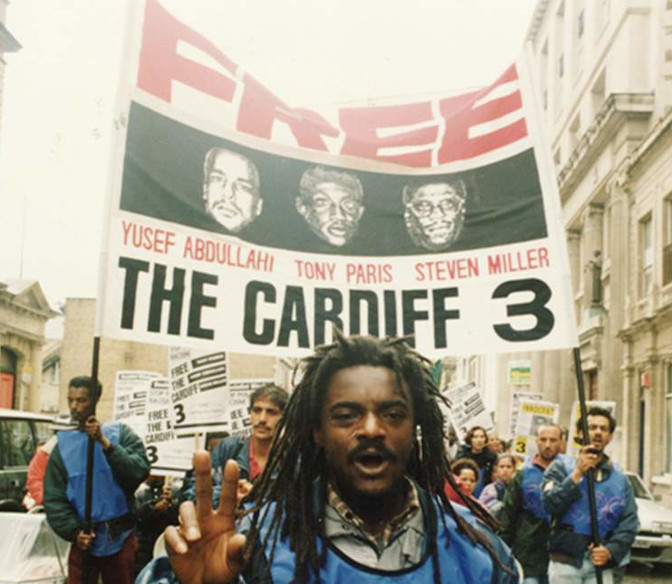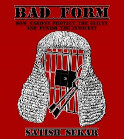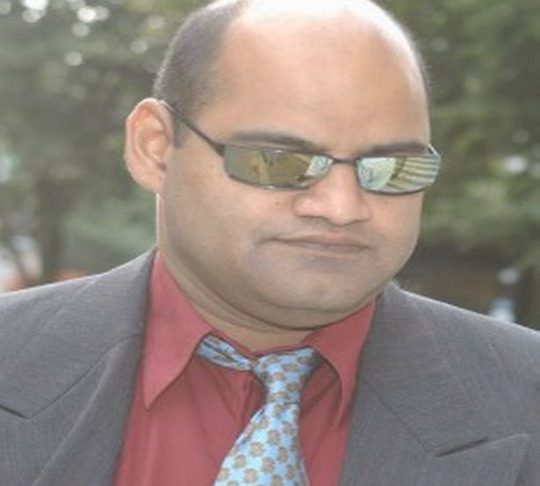
Injustice Reigns
March 12, 2025
Deeply Flawed
March 15, 2025By Satish Sekar © Satish Sekar (March 12th 2025)
Predictable
The unduly lenient tariff that Mr Justice (Sir John) Royce, now retired, imposed on Jeffrey Gafoor, the real murderer of Lynette White, 20, had consequences that should have been anticipated and prevented. Despite the excessive violence of the murder – her throat was slit to the spine and she suffered over 50 stab wounds, which was gratuitously violent. It was far more than was required to kill her if that was the purpose.
He targeted her breasts – at least 25 wounds were inflicted on her breasts. This was undoubtedly a sexually-motivated. Royce said ‘it bordered on the sadistic.’ He was wrong. It was sadistic and he deserved a tariff that reflected the gravity of his crime. Instead, he got a tariff that was two years lower than the minimum starting point required under Schedule 21 of the Criminal Justice Act of 2003.
Undeserved
While he was punished under the law as it was at the time of the murder, he actually wasn’t. It should be pointed out that while the real killer, Gafoor got a tariff equivalent to 13 years, Tony Paris got a 14-year tariff and Yusef Abdullahi (both deceased now) received an 18-year tariff in the 1990s. Abdullahi and Paris were innocent yet they received harsher tariffs than the truly guilty Gafoor. This ought to have been impossible yet it happened as they were all punished under the law as it was in the late 1980s or early 1990s.

This meant that either Abdullahi and Paris should have received a lower tariff, which was never argued or Gafoor should have received a higher one, so how was it possible that the innocent could be punished more harshly than the guilty for the same crime?
Gafoor could plead guilty – he was. He received a 2.5 years discount for his guilty plea, given more than 15 years after Lynette’s murder and in response to overwhelming evidence of his guilt – his blood (and DNA) had been preserved by paint as the murder scene had been painted over as a health hazard in July 1988. It was therefore impossible for his blood to have been planted at the crime-scene as Gafoor only emerged as a suspect in the second reinvestigation (1999-2003).
The investigation established the DNA profile of the killer, even if they were unaware of its source at that time – the National DNA Database did not yield a match. This was one of the first investigations to utilise familial DNA. The original investigation was totally unaware of Gafoor – he was not a suspect at all until excellent police work by Detective Constable Paul Williams identified the family of the killer, which tightened the net around Gafoor. With arrest imminent, Gafoor attempted to commit suicide – police knocked his front door in and saved his life. There would be no easy escape for Gafoor – belatedly he would pay for his grotesque crime.
Inadequate
Former Detective Chief Superintendent Kevin O’Neill, led the reinvestigation that brought Gafoor to justice. What does he think of the tariff that Mr Justice Royce imposed on Lynette’s killer?

“Well obviously, I feel it’s far too short,” O’Neill said. “You know, it’s an extremely brutal crime and the decisions made at the time of the investigation said the amount of attacks [stab wounds] to the chest of a female in those days was an indicator this is a sexual offender. This is someone who has maybe a different perspective of women as opposed to others.”
He is disappointed by the whole process, a far too lenient tariff followed by what he considers to be the too early release of Gafoor.
“[W]hat’s disappointing is it’s clear that you and others, prior to this decision being finalised, brought this to the Parole Board’s attention. From my perspective, from the outside looking in, they made their decision and they didn’t want to change it. Again, for me, that’s weakness,” O’Neill said.
“That decision should have been reviewed in the open, not a closed meeting, an open meeting and they should have been able to answer the challenges from those people impacted upon it. It seems an extremely short time to come out after such an horrendous case”.
Failure upon Failure
There are numerous flaws throughout the system graphically illustrated by this case which remains one of the most miserable failures of British justice ever. The system failed to take into account that allowing the innocent to suffer wrongful accusation and possibly wrongful imprisonment is utterly appalling. The Cardiff Five never recovered from the injustice – Ronnie Actie and Yusef Abdullahi both lost their lives before turning 50 years old. Paris died in his mid-60s. None of them received official assistance to rebuild their lives. It’s late, but not too late for John Actie and Stephen Miller, but neither of them receive after-care despite their vindication.
Gafoor could have prevented the injustice the Cardiff Five endured – he alone knew that not only were they innocent, but also that he, and he alone, was guilty. He kept silent and got on with his life, purchased by them doing his time for him. He savoured his ill-gotten freedom for 15 years. Then, he received all the benefits on offer, a lower tariff than two of the Cardiff Three, a reduction for a guilty plea that was 15 years too late and delivered when he had little option, and he attempted to hold the system to ransom to give evidence at the 2011 trial of the former police officers and two witnesses.

This came out in his evidence at that trial, but incredibly, it does not appear to have been mentioned at any of his six applications for parole. Why not?
It is also astonishing that the Sentencing Council, which includes judges has never considered the highest sentence of all – life imprisonment for murder. Is the tariff system adequate? Are judges applying the law adequately?
The fact that the only judge ever to decide that allowing the innocent to go to prison for a crime the defendant knew he had committed was a serious aggravating factor that was reflected in the tariff – albeit far too leniently – was Royce illustrates that the innocent is the wrong type of victim, unworthy in the eyes of the judiciary of having their ordeals acknowledged in the tariffs.
The powers to impose adequate tariffs through aggravating factors exist from the inception of Schedule 21 in 2003. It is telling that bar the Lynette White Inquiry no judge has seen fit to add a single day to the tariff of the truly guilty for allowing the innocent to have their lives wrecked. If judges refuse to use the powers that Parliament gave them, surely the Sentencing Council should issue guidelines and if that makes no difference perhaps judges should be obliged by an amendment to Schedule 21 to treat such conduct as a serious aggravating factor.
After all, the actions of real killers show that they have no qualms in allowing the innocent to pay the price for them, especially when there are no consequences for evading responsibility for their crimes. It is especially necessary that tariffs adequately reflect the seriousness of the crime committed and are judged on the facts of the case being considered. While it is no guarantee of early release – that depends on the Parole Board – unduly lenient tariffs have the inevitable consequence of allowing the murderer who benefits from such a tariff to apply for release on parole earlier than the public would like and in some cases after a paltry tariff that does not the primary – sole – purpose of the Parole Board, which is the protection of the public is not served.
The Secretary of State for Justice, Shabana Mahmood, is due to meet the Sentencing Council shortly. It is to be hoped that this gross loophole will finally be closed.




